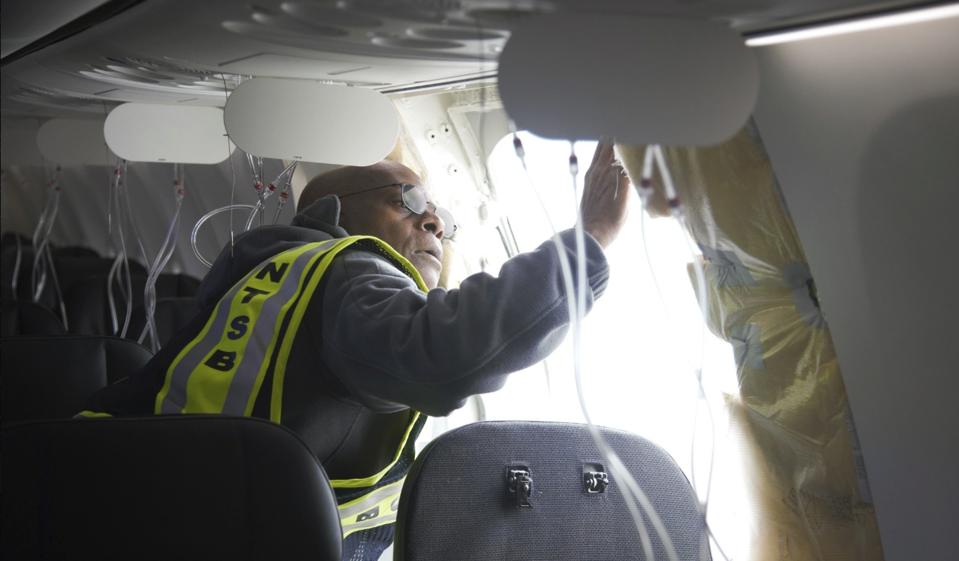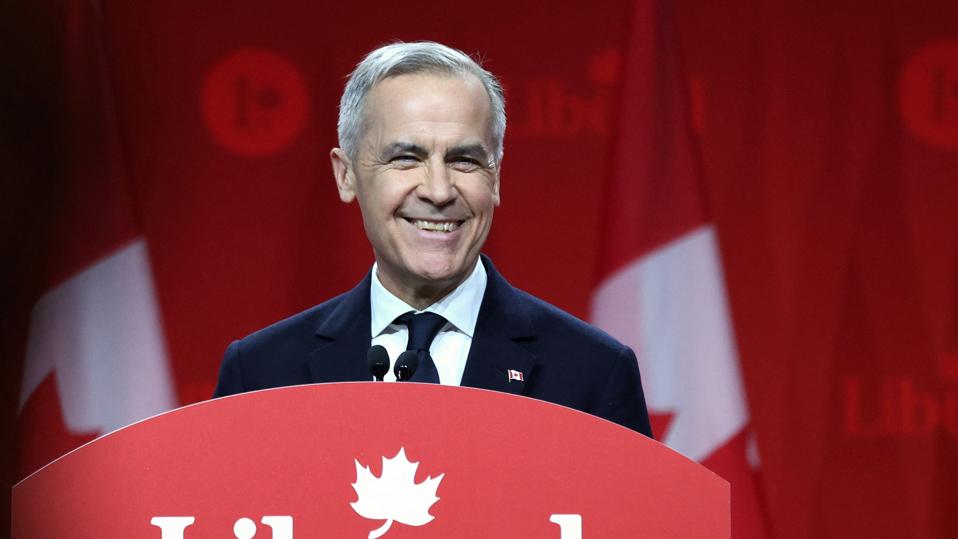The cockpit voice recorder for Alaska Airlines Flight 1282 was overwritten, hampering investigators aiming to determine why a door plug for an exit door on the Boeing 737 Max 9 jetliner blew out shortly after the flight took off from Portland on Friday night.

NTSB Investigator-in-Charge John Lovell examines the fuselage plug area of Alaska Airlines Flight 1282 on Sunday.
National Transportation Safety Board,
“There is nothing on the cockpit voice recorder,” Jennifer Homendy, chair of the National Transportation Safety Board (NTSB), told reporters at a Sunday news conference following the first full day of investigation, adding that “since 2018, we’ve had we’ve done 10 investigations where the CVR was overwritten.”
When investigating any incident, the NTSB wants to listen to the audio from the cockpit to try to glean clues from verbal communication or sounds, such as mechanical noises or alarms that might be overheard. But too often that audio is not preserved for investigators, making it much harder to get to the bottom of what happened.
Homendy described the overwritten recording on Alaska Airlines flight 1282 as “a loss for FAA and a loss for safety, because that information is key, not just for our investigation, but for improving aviation safety.”
As the independent U.S. government investigative agency responsible for civil transportation accident investigations, the NTSB has called for the Federal Aviation Administration (FAA) to increase black-box recording time to 25 hours, which is the norm in Europe and in many other countries.
Currently, the FAA requires black-box recordings to be kept for only two hours. Historically, the agency has pushed back on retaining black-box recordings for longer time periods, often citing costs as a reason not to make the change.
The NTSB has strongly recommended a 25-hour CVR since 2018, following an incident at San Francisco International Airport where an Air Canada plane came within 60 feet of four aircraft waiting to take off. “On that taxiway were four airplanes with a combined total of about 1,000 people,” Homendy said, adding that the 2018 investigation was made more difficult because the plane’s CVR had been erased.
Five years later, the NTSB chair again pushed for a 25-hour recording time at an FAA safety summit in March 2023, following a string of near-collisions on runways that had one thing in common: In every instance, the CVR had been overwritten.
On Sunday, Homendy said that since the Alaska Airlines flight crew did not pull the circuit breaker for the CVR, the recording was overwritten at the two-hour mark, leaving investigators on the scene unable to use the data.
“Cockpit voice recorders aren’t just convenient for the NTSB to use in investigations,” Homendy said. “They are critical to helping us accurately pinpoint what was going on, and it’s key to safety.”
An FAA spokesperson confirmed that, in November, the agency proposed to extend the cockpit voice-recording requirement to 25 hours for all newly manufactured aircraft. “Our proposed rule aligns with regulations set by the International Civil Aviation Organization and European Union Aviation Safety Agency,” according to an FAA spokesperson.
But Homendy pointed out that a rule that commercial jets can have a lifespan of up to 50 years, so the proposed change would not have been helpful for many of the NTSB’s investigations in recent years. Furthermore, the NTSB chair pushed back on the notion that replacing black boxes would be prohibitively difficult or costly for the FAA to implement. “You can easily install a different cockpit voice recorder and increase the time from two hours to 25 hours,” she said.
The FAA proposal acknowledges that retrofitting the current fleet would be a faster way to achieve the “projected benefits to safety,” but estimates that it would cost roughly $742 million to retrofit the nearly 30,000 planes in the current U.S. fleet compared to $196 million in incremental upgrade costs for the estimated 43,000 aircraft expected to be built in the next 20 years.
For some perspective, the FAA’s budget request for 2024 is $24.8 billion, while its current authorization expires on March 8. Last July, the House of Representatives passed a five-year FAA reauthorization bill with rare bipartisan support, but that bill remains hung up in the Senate.
Meanwhile, the airline industry has nearly recovered financially from the pandemic. According to the International Air Transport Association (IATA), commercial airlines ended 2023 with $23.3 billion in net profit. That’s down from $26.4 billion in profits in 2019 but up from a loss of $3.8 billion in 2022, and significantly higher than previously expected.
Members of the public are invited to leave comments for the FAA on this subject through February 2, 2024.
This article was first published on forbes.com and all figures are in USD.


